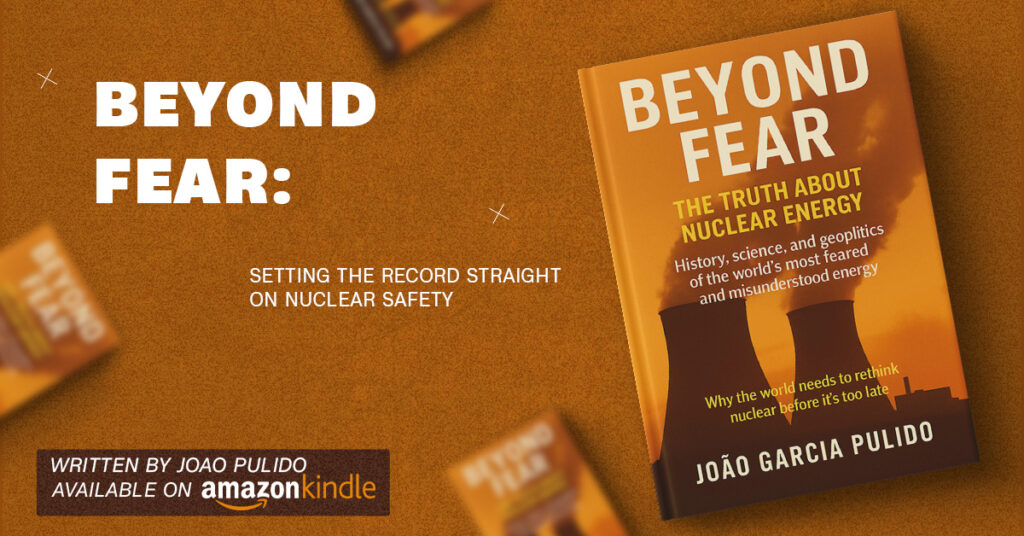Nuclear energy lives in a strange cultural double life: technically one of the safest, lowest-carbon ways to make large amounts of electricity — and culturally one of the most feared. Joao Garcia Pulido’s
Beyond Fear steps into that gap with a clear mission: replace sensational narrative with sober data and practical context so societies can decide from evidence, not panic.
One of the book’s most important contributions is its rigorous comparison of mortality and harm across energy sources. Using recognized datasets, Pulido shows that nuclear fatalities per terawatt-hour are tiny compared with coal, oil, and even some industrial activities — a fact that flips the familiar “nuclear = most dangerous” mantra on its head. The manuscript cites numbers that place nuclear near the bottom of mortality tables (e.g., 0.007 deaths/TWh), highlighting that fossil fuels remain far deadlier overall.
Pulido doesn’t shy from the accidents that haunt nuclear’s public image. He walks readers through Three Mile Island, Chernobyl and Fukushima with balanced rigor: Chernobyl’s catastrophe was the result of an unsafe design and operational failures; an extreme natural disaster precipitated Fukushima’s emergency and, crucially, had no confirmed direct radiation deaths — details too often missing in pop narratives. These candid case studies are used not to minimize harm but to show how lessons were learned and designs improved.
What matters for decisions today is not ancient designs but modern engineering. The book details how Generation III+ reactors and the next wave of designs incorporate passive safety systems and multiple redundant barriers that dramatically lower the chance and consequence of accidents. The author also stresses that risk assessment must be comparative: air pollution, mining disasters, oil spills and long-term climate harm exact far greater human cost than nuclear operations under modern regulation.
Pulido also tackles public perception and the “fear industry” — the cultural machinery (films, headlines, activism) that amplifies worst-case thinking and often obscures nuance. He traces how media, entertainment and political narratives have hardened public opposition, sometimes with backing from groups whose economic or strategic interests benefit from a continued fossil-fuel dependency. Exposing these drivers is a necessary step toward a more rational debate.
So, what does this mean for policy and public conversation? The manuscript’s practical takeaway is straightforward: risk must be measured against alternatives. In a world racing to cut carbon, refusing a mature, low-carbon, reliable technology for Fear shaped by decades of misperception is a luxury societies cannot afford. Pulido’s call is to replace Fear with literacy: better public explanation of safety systems, honest discussion of waste solutions, and sober comparison of all energy harms.
Ultimately, Beyond Fear is not propaganda in favor of nuclear; it’s an argument for reasoned judgment. It accepts nuclear challenges honestly while insisting on proportionate responses: invest in safer next-gen designs, strengthen regulation and emergency planning, and teach citizens the facts. Replacing dread with data, the book invites readers to decide the future of energy from a place of knowledge rather than inherited anxiety.
Amazon Link: The Truth About Nuclear Energy



